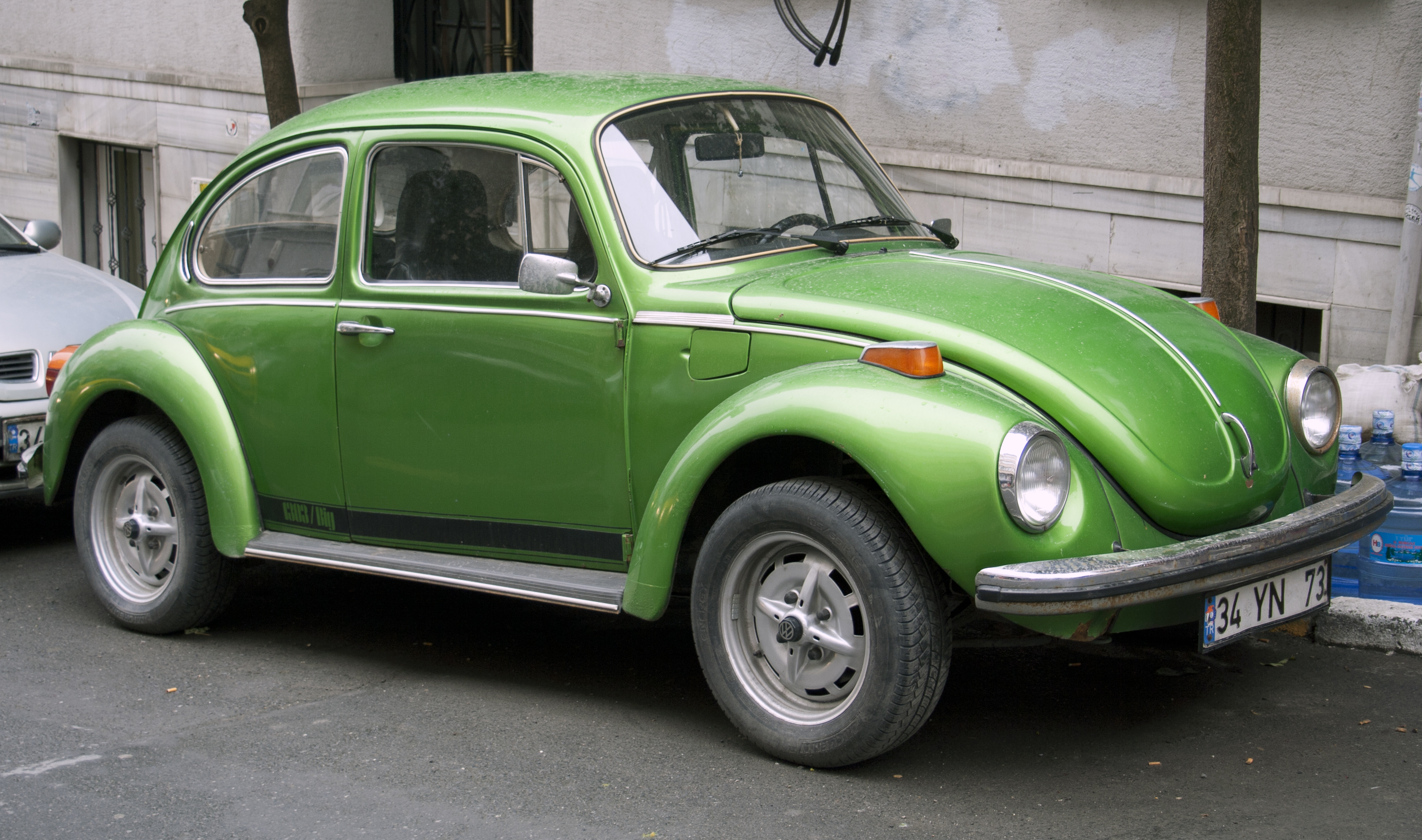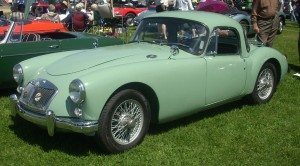Morris Minor (1948 – 1971)

Image source: https://upload.wikimedia.org/wikipedia/commons/0/06/Morris_Minor_1000_1958.jpg
Morris Minor when launched first up earned much acclaim for its design, except for one mischievous critic, who in humourous mood, called it a ‘poached egg’. It came with a side valve engine, and was a smooth car, down to its comfortable handling and steering.
The Minor MM initially came as a two-door saloon, until it was revamped with four-door saloon in September 1950. Later on, the Series II was introduced in 1952, which retained the split screen, but was now powered by the A-series engine from Austin’s A30. Initially, the engine only made headway in four-door models until 1952, but was embraced by pretty much all the models by Feb ‘53. Another characteristic of the Morris Minor’s makes of this vintage was that they had the more robust 948, 1098 and 1275 cc engines embedded in them.
The 1956 Morris Minor 1000 stands out as a class apart from the rest of its kind. It’s got both the performance and the look of a classic English Car. It made huge strides after September 1962 when 1098cc engines replaced the old 948, giving it the boost of speed to match its impeccable handling. Improvements were also made by adding larger brakes in the same period. The 1000s are unique in their design, with a curved one-piece windscreen, and the all too familiar larger rear window. After both the convertibles and saloon productions were left inoperable in 1969 and in 1970 respectively, the Travellers were the only make still to be around until 1971.
Morris Minors are still regarded as the epitome of a classic English car.
Volkswagen Beetle 1200 and 1300 (1957 – 1978)

Image source: https://upload.wikimedia.org/wikipedia/commons/2/2d/1973-1974_Volkswagen_%221303_Big%22,_Istanbul.jpg
The Volkswagen Beetle 1200, for most people remains the iconic Beetle. There’s still some nostalgia about the 1200s among the lovers of Classic Cars. For the same reason, it was manufactured prolifically and is the most identifiable make still. The larger front and rear windows rendered improvement in visibility possible, while at the same time the powerful engine made possible optimum performance.
The 1200s saw continuous improvements during their lifetime until being replaced by the 1300s in 1968. The 1300 was given a completely different look, including new headlamps and bulky bumpers. In addition, there was an uprated safety kit added inside. Major mechanical changes were made as well like the 12 volt electrics and dual circuit brakes. The new fuel tank now didn’t need to be filled through the luggage compartment.
Ferrari 365 GTC/4 (1971 – 1973)

Image source: https://upload.wikimedia.org/wikipedia/commons/4/42/SC06_1972_Ferrari_365_GTC_4.jpg
Ferrari 365 GTC/4 was introduced 3 years after the magnificent Daytona. It was a wonder car,but just didn’t get the corresponding acclaim that it deserved. The GTC/4 was sold alongside Daytona, but with slightly different features, in a way, almost second-grade compared to the latter. It shared the four-cam V12 with Daytona. It provided the comfort of a car for daily use. The 365 GTC/4 improved in performance with the power steering, and hydraulic clutch features, something that Daytona missed out on. The softer suspension set-up rendered smooth driving possible.
The mainstream perception was that if you couldn’t afford a Daytona, you could opt for Ferrari 365 GTC, it was pretty much the same thing, if the comfort of a smoother drive and reliability of a robust motor-car was your primary concern. Owing a 365 GTC would have actually costed you a third of what a Daytona would. Still in that much cost you were acquiring the same engine and and the styling of a supercar. That’s why the choice of most cost-conservative buyers’ have been 365 GTC.
Triumph Spitfire (1962 – 1980)

Image source: https://upload.wikimedia.org/wikipedia/commons/4/46/1974_Triumph_Spitfire4.jpg
Triumph Spitfire faced many setbacks in its rivalry with Abingdon, which did well to improve in a variety of ways. But despite that Triumph made its name as a lovely looking sports car. The Italian designer Giovanni Michelotti took keen interest in giving it a new look in the form of a distinct Herald Chassis, a look different from the Sprite and Midget, but which looked truly beautiful.
For most people it epitomised the enjoyment of driving a sports car. Triumph, despite its shortcomings, proved to be a player of stamina, outlasting even its chic rival by a year. The Spitfires were named after the famous World War II fighter plane. Cars received improvements with Mk II and became desirable among drivers who understand the limitations of a rear suspension design. For those who want to feel the joy of driving a sports car but are tight on budget, Spitfire might be the right option for them. These cars are decent-looking, inexpensive, and easy to maintain.
MG MGA (1955 – 1962)
Image source: https://upload.wikimedia.org/wikipedia/commons/7/72/’57_MG_MGA_Coupe_(Hudson).JPG
The MGAs are considered to be the best MG sportscars. Eye-catching design, agile, performance-centered and smooth gear change easily make it a desirable car. It was powered by twin-carburettor B-series engine.
Independent front suspension and rack and pinion steering allowed for a smoother ride. At first, the car came with 1489cc four-cylinder B-series OHV engine in 68 bhp form. But it was later upgraded to 1.6 litres in May 1959 for Mk2 revamp.
Harry Weslake, the designer, introduced new twin cam cylinder head for the B-series engine, which resulted in definite improved performance. It resulted in increase in sales. Though there were a few shortcoming in the engine, like it suffered occasionally from piston damage and other bottom end failures. Today owning an MGA would require to you to first consider some of the maintenance costs, and a cautionary approach of sticking with a MGB engine in it. Still the maintenance parts are readily available. and if you’re that avid sports cars lover and adding this piece of beauty to your collection is something of a wish for you, you wouldn’t be disappointed in pursuing that fancy.
About The Author
 Lisa Coffey passionately writes about automobiles and offer it to the world on social media. She always stays up to date with auto industry. Joyful by nature, she is an avid reader of fiction and loves to put her heart into everything she does. She also write for numerous magazine related to automobiles. Building a good reputation among her associates.
Lisa Coffey passionately writes about automobiles and offer it to the world on social media. She always stays up to date with auto industry. Joyful by nature, she is an avid reader of fiction and loves to put her heart into everything she does. She also write for numerous magazine related to automobiles. Building a good reputation among her associates.
Lisa Coffey – Visit my gravatar – Follow me @facebook – @lissacofey – Follow me @twitter – #lisacoffey

Leave a Reply
You must be logged in to post a comment.